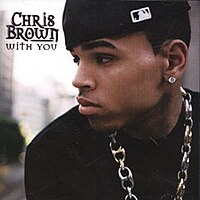Piano Sheets > Chris Brown Sheet Music > With You (ver. 4) Piano Sheet
With You (ver. 4) by Chris Brown - Piano Sheets and Free Sheet Music

About the Song
Other avaliable versions of this music sheet: Version 1 Version 2 Version 3 Version 4
"With You" is a pop/R&B song by Chris Brown, nominated for 2008 MTV Video Music Awards and written by Johnt Austin, Tor Erik Hermansen, Mikkel Eriksen, Espen Lind, Amund Bjrklund, and produced by Stargate. It was released as the third single from Brown's second studio album Exclusive (2007). Most fans and critics agree that the song is very similar to Beyonc Knowles's hit "Irreplaceable", though neither Chris nor Stargate ever received any backlash for the song; the co-writers of "With You" also co-wrote "Irreplaceable".
Following the less successful worldwide chart performances of previous singles "Wall to Wall" and "Kiss Kiss", "With You" was released on December 4, 2007 in the United States as the album's third single, and the second single in most international music markets.
"With You" was a worldwide commercial and critical success, becoming Brown's second best-selling single and.
Download this sheet!
About the Artist

Random article
How to read sheet music How to read sheet music
Reading piano sheet music is no simple thing. For it first we require to know the individual elements of the composition itself in order to read sheet music. You must make sure that you are familiar with that particular composition's language before you tackle the entire piece.
In order to grasp the intent and nuances of the piece quickly for reading piano sheet music following steps are to be considered:-
1> To start with have a look over entire composition to get the feel of the length and style of the sheet music. This first run through is just to have a quick overview of the composer's work. This will slowly prepare you to read the sheet music.
(More...)
